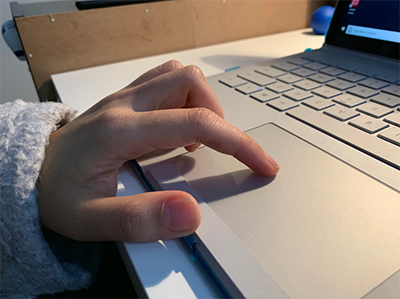Personalized Design

Introduction
Universal design (UD) has, over the years, become a very popular concept. It is the focus of several academic research topics, a key driver for industrial products, the limelight of talks and presentations, and arguably, the pinnacle for advertising one's work. Theoretically, UD is synonymous to Design for All (DfA). However, in reality, UD only works for most people, most of the time, refuting the definition of "all." Antithetically, Personalized Design (PD) strives to address the needs of all people, all of the time, by adapting systems to the individual user's needs as opposed to the other way around.
What is Personalized Design and Why is it Important?
From digital software such as Microsoft Word and Google Doc to physical devices such as laptops, tablets, and mobile phones, our everyday world revolves around technological solutions. Even though most products are designed based on the findings from some form of user experience research, most users find themselves constantly adapting to new designs, interfaces, and functionalities.
This is especially true for people with disabilities. Consider someone with limited hand function trying to use a software that has a shortcut for a feature involving pressing four different keys at the same time. For someone with fully functional hands, such a feature improves the interaction performance significantly. But for someone with limited hand function, to fully utilize the feature, they would need to adapt to the system either by not using the shortcut at all or using additional assistance (such as an on-screen keyboard). A possible solution designed with a Personalized Design approach would adapt to the user's unique level of abilities and preferences, offering shortcut possibilities with key combinations the user would be able to easily access.
When technology is invented or engineered, it is either designed with a specific group of users in mind or for the broader audience. Such a thought process and approach can easily lead to the developed technology not being fully utilized by a subset of users who may find the need to use it on a daily basis. It is important to recognize that every user is unique and, therefore, developing or modifying technology that can adapt to suit specific, individual needs is crucial.
The concept behind Personalized Design, in itself, is very simple: The system should adapt to the individual user's needs and preferences resulting in each user benefiting the most from any given system. In practice, however, admittedly, it is a remarkable challenge. How do we know about each user's individual needs at any given point in time, given that as a human, our ability levels vary throughout the day? How many factors do we consider (vision, mobility, cognition, etc) and how do we prioritize such factors when used in conjunction with each other?
The considerations based on a user's abilities are well covered in ability-based design, which advocates for systems to adjust themselves based on a person's ability level. What makes Personalized Design novel is its extended inclusion of concepts beyond the Ability Based Design. For example, consider a user's cultural preferences. A certain choice of color could have varying implications depending on the meaning it holds in the user's culture. Similarly, the choice of words could be interpreted differently. Human emotions can also play a vital role in content selection and interface presentation. While each of these areas is an active research area on its own, they all drastically contribute as a subset to a successful Personalized Design approach.
The term accessibility is often interpreted as something exclusively for people with disabilities. Very quickly, such an interpretation leads to the prioritization of the "mainstreamed" disabilities when designing products and solutions. A Personalized Design approach helps us envision abilities as a spectrum and develop solutions geared towards each individual person than an entire population of people that may share a common medical diagnosis but are still, humanly so, vastly different from each other.
Resources
- Marcus, A. (Ed.) (2011). Design, user experience, and usability: Theory, methods, tools, and practice. Proceedings from DUXU '11: First International Conference, held as part of HCI International. Springer Link.
- Gajos, K. Z., Weld, D. S., & Wobbrock, J. O. (2010). Automatically generating personalized user interfaces with Supple. Artificial Intelligence, 174(12-13), 910-950.
- Wobbrock, J. O., Gajos, K. Z., Kane, S. K., & Vanderheiden, G. C. (2018). Ability-based design. Communications of the ACM, 61(6), 62-71.
- Microsoft Design. (n.d.). Inclusive design. Retrieved from https://www.microsoft.com/design/inclusive/.
Discussion Questions
- Level AAA is the highest level of accessibility standards conformance, as per WCAG 2.0. However, WCAG 2.0 states that "It is not recommended that Level AAA conformance be required as a general policy for entire sites because it is not possible to satisfy all Level AAA Success Criteria for some content.". Given that the most accessible conformance level is not recommended for reasons involving pragmatism, how pragmatic is Personalized Design vs universal design?
- If we were to make a fully personalized solution, what would be considered as a good starting point?
- What would be a satisfactory way of testing for personalization in existing and future solutions?
Project Ideas
- Automatically generating keyboard shortcuts for websites depending on a user's ability level.
- Adjusting UI colors dynamically based on factors such as color blindness, color contrast standards, light in the room, and user emotions.
- Filtering content on webpages based on a user's anxiety and stress level.